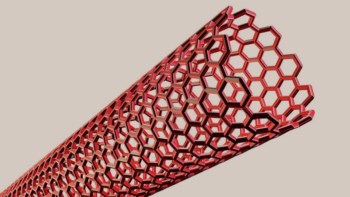
Superconducting materials offer a promising substrate for computers of the future because of their resistanceless operation at low temperatures. Fluxons, quantum tubes of magnetic field that thread through a superconductor, could act as tiny, efficient memory elements in such devices – but only if their arrangement can be controlled. Now, researchers in Austria have developed nanostructured superconductors that can trap and arrange fluxons in non-uniform patterns. These patterns could provide the basis of information storage in superconductor-based computers.
To improve electronic devices while decreasing their energy consumption, scientists are searching for new information-processing technologies using new materials. Superconductors are one solution because they have zero resistance – and therefore no energy loss – when cooled to low temperatures. Unfortunately, many phenomena used in classical electronics work differently in superconductors, including the magnetism that is so useful for information storage.
When a certain type of superconductor is placed in a magnetic field, the field enters the material in tiny tubes of a field called fluxons surrounded by current vortices. Fluxons naturally form a uniform hexagonal lattice inside the superconductor, which in terms of information is equivalent to a blank piece of paper. If we are to encode information in this arrangement, we need to be able to control the pattern.
Caught in a trap
In research that could represent the first step towards such an achievement, Wolfgang Lang and his team at the University of Vienna and Johannes-Kepler-University Linz have produced a nanoscale array of traps that can cause the fluxons to get stuck in non-uniform arrangements. These traps could be the bits for a fluxon computer, where the fluxon occupation, controlled by a magnetic field, defines each trap as a 0 or 1.
The traps even help stabilize the non-uniform arrangements for longer-term information storage. Georg Zechner, the lead author of the paper, says: “Even after days, we have observed precisely the same arrangement of fluxons – a long-term stability that is rather surprising for a quantum system.”
The fluxon trap technique was developed with the industrial partner IMS Nanofabrication AG, Austria. The researchers created the structure by bombarding the superconducting material with helium ions through a mask, patterning an array of defects. The process is quick, easy to perform at an industrial scale, and avoids contact with the material surface.
The next step is to find a way to change and detect the arrangement of fluxons easily, including more complex nanostructured patterns. Building on the progress made by Lang and the team, these methods could become the writing and readout techniques for a superconductor-based memory device.
Full details of the research are reported in Physical Review Applied 10.1103/PhysRevApplied.8.014021.



